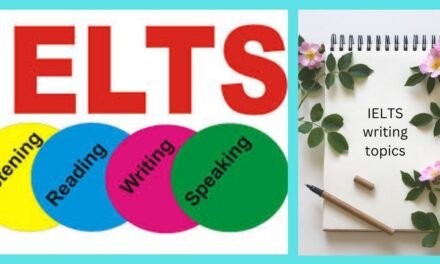Do you dream of expressing yourself confidently in English, but find yourself stumbling over grammar or struggling to find the right words? You’re not alone. Many learners face challenges when it comes to speaking English fluently. The good news is, with the right approach, you can overcome these hurdles and become a more effective communicator. In this guide, we’ll explore some common problems English learners encounter while speaking, and provide practical solutions to help you improve your fluency and feel more at ease in conversations.

The world is an interconnected place, and English proficiency is a valuable tool for navigating it. But speaking English can feel daunting, especially when you bump into grammar roadblocks or struggle to keep up with fast conversations. This guide aims to be your companion on your English speaking journey. We’ll identify common problems learners face and equip you with practical solutions to boost your fluency and transform you into a confident communicator.
English speaking tips with problems and solutions
The ability to communicate effectively is a cornerstone of personal and professional success. Yet, for non-native speakers, navigating a new language’s complexities can lead to many problems in speaking and their solutions. Whether it’s the frustration of limited vocabulary, the struggle to master grammar and sentence structure, or the fear of making mistakes holding you back, these problems in speaking and their solutions can significantly impact your confidence and ability to express yourself clearly.
What is speaking?
Speaking is more than just uttering words. It’s a complex act that combines the physical production of sounds, language knowledge, and social interaction. Here’s a deeper dive into what speaking entails:
-
Physiology of Speech: Speaking starts with the lungs pushing air through the vocal cords, which vibrate and create sound. The tongue, teeth, and lips then shape that sound into specific words. This intricate coordination allows us to produce a vast range of sounds that form the building blocks of language.
-
Language Skills at Play: Speaking effectively requires a strong foundation in language skills. You need to know the vocabulary to express your ideas, understand grammar rules to structure your sentences, and possess good pronunciation to be understood clearly.
-
The Art of Communication: Speaking isn’t just about getting the words right; it’s about conveying meaning to others. We adjust our language depending on the situation and audience. We use tone, volume, and even body language to emphasize certain points or emotions. Effective speaking involves listening actively to ensure messages are received and understood as intended.
-
Beyond Words: Non-verbal cues like facial expressions, gestures, and posture play a significant role in speaking. They can add emphasis, reveal emotions, and even contradict what we say verbally.
-
A Learned Skill: While humans possess a natural capacity for language, speaking a particular language fluently is a learned skill. We learn to speak by observing and interacting with others, starting with basic sounds and gradually progressing to complex sentences.
Who are native speakers?

Native speakers are people who learn a language from a very young age, typically in their childhood environment. It’s often the language spoken by their parents or the main language of their home country. They develop an intuitive understanding of the language, including its grammar, slang, pronunciation, and natural flow – almost like a sixth sense for their native tongue.
Can we be native speakers?
While you can achieve fluency in another language, becoming a true native speaker is quite difficult. This is because native speakers acquire language naturally from a very young age, absorbing its nuances like breathing. They develop an unconscious understanding of things like slang, accents, and the natural flow of speech that can be challenging to replicate later in life. We cannot be a native speaker but we will be fluent or experts in any other language.
Importance & advantage of speaking like native speakers
The ability to speak English like a native unlocks a world of opportunities and fosters deeper connections. Here’s why achieving native-like fluency is a worthwhile pursuit:
Importance
Enhanced Communication: Speaking like a native empowers you to express yourself clearly, confidently, and with nuance. You can navigate complex conversations, articulate your ideas effectively, and be better understood by a wider audience.
Global Opportunities: English fluency opens doors in education, careers, and travel. It allows you to participate in international conferences, pursue studies abroad, and connect with people from diverse backgrounds.
Cultural Understanding: Language is a gateway to culture. Speaking like a native allows you to grasp cultural references, understand humor, and connect with people on a deeper level. You’ll gain a richer appreciation for the English-speaking world.

Advantages
Increased Confidence: Fluency fosters self-assurance in social and professional settings. You’ll feel comfortable expressing yourself and participating in conversations without hesitation.
Improved Listening Skills: The more you speak like a native, the better you understand native speakers. You’ll pick up on subtle cues, accents, and slang, making you a more well-rounded listener.
Reduced Misunderstandings: Speaking accurately minimizes the risk of miscommunication and awkward situations. You’ll be able to convey your thoughts precisely and avoid unintended offense.
Cognitive Benefits: Studies suggest that multilingualism can enhance cognitive flexibility, memory, and problem-solving skills. Speaking like a native keeps your brain sharp and adaptable.
Beyond Perfect Grammar
While grammatical accuracy is important, fluency and natural expression are key to sounding like a native. Don’t be afraid to embrace colloquialisms and idiomatic expressions used in everyday conversations. The goal is to communicate effectively and connect with others on a deeper level.
The Journey to Fluency
Becoming a native-like speaker takes time and dedication. Embrace the challenges, celebrate your progress, and immerse yourself in the language. With consistent effort and the right approach, you’ll be well on your way to mastering spoken English.
Problems for why we cannot listen to native speakers
While we identified the main challenges learners face when striving for native-like fluency, let’s delve deeper into each one to understand them better:
1. Grammar Gremlins
Intricate Rules and Exceptions: English grammar boasts a complex set of rules, peppered with exceptions and variations. Verb tenses, with their past, present, and future forms, each with perfect and continuous variations, can be a maze for learners. Subject-verb agreement, ensuring the verb form aligns with the subject’s number (singular or plural), adds another layer of complexity. Articles (a, an, the) have their own set of rules, further complicating sentence structure for learners.
Focus on Rules vs. Fluency: While grammar is essential for clarity, a hyper-focus on constructing perfectly grammatical sentences can become a barrier to fluency. Getting caught up in grammatical intricacies can lead to hesitation, slow down conversations, and hinder the ability to express oneself spontaneously. Native speakers often make minor grammatical errors in casual conversations, prioritizing getting their message across smoothly.
2. Vocabulary Voyage
Limited Word Choice: A restricted vocabulary can significantly limit your ability to express yourself with nuance and precision. Having a small pool of words forces you to rely on simpler language, making it challenging to convey complex ideas or specific emotions. The richness of spoken English lies in its vast vocabulary, allowing for precise expression and vivid descriptions.
Confusing Synonyms & False Friends: The English language is full of synonyms – words with similar meanings but subtle differences. Using the wrong synonym can alter the intended meaning entirely. Additionally, English has numerous “false friends” – words that look similar to words in another language but have entirely different meanings. These can lead to misunderstandings and awkward phrasing.
3. The Pronunciation Puzzle
Sounds not Found in Native Language: Some sounds used in spoken English might not exist in your native tongue. The “th” sound, for example, can be particularly challenging for learners whose languages lack this specific articulation. These unfamiliar sounds can lead to pronunciation errors and accents that affect how well native speakers understand you.
Silent Letters & Stress Mishaps: English is infamous for its “silent letters,” letters that are written but not pronounced (like the “k” in “knife”). These can throw learners off, making it difficult to sound out words accurately. Adding to the complexity is English’s unpredictable stress patterns. Stressing the wrong syllable in a word can completely change its meaning, creating confusion for both the speaker and listener.
4. Fear Factor
Fear of Making Mistakes: The fear of sounding silly or being misunderstood is a significant hurdle for many learners. This fear can lead to hesitation, anxiety, and a reluctance to speak up in conversations. Making mistakes is a natural part of the learning process, but the fear of judgment can hinder progress and prevent learners from taking the risks necessary to improve.
Lack of Confidence: Not feeling confident in your English skills can create a self-fulfilling prophecy. If you believe you can’t speak fluently, you’re less likely to participate in conversations and actively practice. This lack of practice reinforces the feeling of inadequacy, creating a vicious cycle that can be difficult to break.
5. Input vs. Output Imbalance
Emphasis on Reading & Writing: Traditional language learning methods often prioritize reading and writing skills over spoken communication. This can leave a significant gap in fluency, as learners haven’t had enough opportunities to practice speaking and listening in real-world situations. While reading and writing are important, they don’t equip you with the skills necessary to navigate spontaneous conversations.
Limited Exposure to Native Speakers: Lack of interaction with native speakers can hinder your ability to pick up natural speech patterns, slang, and everyday expressions used in real conversations. Learning from textbooks and grammar drills cannot replicate the nuances and informality of spoken English. Exposure to native speakers allows you to absorb the rhythm, flow, and colloquialisms that make your speech sound more natural.
Understanding these challenges is the first step towards overcoming them. By developing targeted strategies to address each obstacle, you can pave the way for achieving native-like fluency in English.

Solutions for how we speak like native speakers
The journey to native-like fluency in English may seem like climbing a mountain, but don’t despair! With the right approach, you can equip yourself with the tools to navigate the slopes and reach the summit of confident communication. Here’s a detailed breakdown of solutions to tackle those pesky roadblocks:
1. Taming Grammar Gremlins
Focus on Communication Over Perfection: While grammar is the foundation of clear communication, fluency takes precedence in spoken English. Don’t get bogged down in constructing grammatically perfect sentences at the expense of natural flow. Native speakers themselves make minor grammatical errors in casual conversation, prioritizing getting their message across.
Immerse Yourself in Natural English: Surround yourself with authentic English as much as possible. Watch movies and TV shows, listen to podcasts and audiobooks narrated by native speakers. Over time, your ear will become accustomed to natural grammar usage, and you’ll subconsciously absorb correct sentence structures.
Targeted Practice Makes Perfect: Identify specific grammar areas that trip you up. Maybe it’s subject-verb agreement or past continuous tense. Seek out targeted exercises that address those weaknesses. Many online platforms and grammar books offer interactive exercises designed to solidify your understanding.
2. Embarking on a Vocabulary Voyage
Read voraciously, But Actively: Reading exposes you to a vast array of vocabulary used in diverse contexts. Don’t just passively skim through text. Choose materials that pique your interest, like novels, articles, or online content. Underline new words, look up their definitions, and jot down synonyms or antonyms to broaden your understanding.
Incorporate New Words into Your Daily Life: Don’t let new vocabulary become buried treasure! Actively engage with the words you learn. Create flashcards, mind maps, or even write short sentences using the new vocabulary. This helps solidify your understanding and increases the likelihood of using them in conversation.
Spice it Up with Slang and Idioms: Learning common idioms and slang expressions used by native speakers can breathe life into your speech and add a touch of personality. However, use them cautiously in formal settings. Watch sitcoms or listen to stand-up comedy routines to pick up on trendy slang, but remember, formal contexts require a more professional tone.
3. Solving The Pronunciation Puzzle
Shadowing: Mimic the Masters: This technique involves listening to short audio clips from movies or shows and then repeating exactly what you hear. Mimic the intonation, rhythm, and pronunciation of the native speaker. This trains your ear to recognize subtle nuances and helps you replicate them in your own speech.
Minimal Pairs Practice: Sharpen Your Ear: Focus on words that differ by only one sound, like “ship” and “sheep” or “bat” and “bet.” Practice pronouncing these pairs meticulously. This trains your ear to differentiate subtle sound variations and improves your ability to produce them accurately.
Embrace the Challenge of Tongue Twisters: They may sound silly, but tongue twisters can be surprisingly effective in improving your articulation and pronunciation. The complex combinations of sounds within these phrases force your tongue and mouth muscles to move in unfamiliar ways, ultimately enhancing your control over pronunciation.
4. Conquering the Fear Factor
Find a Language Partner: Practice Makes Progress: Seek out opportunities to converse with native speakers or fellow learners. Online platforms and language exchange programs connect you with language partners worldwide. These create safe spaces to practice speaking and gain confidence in your English skills.
Embrace Mistakes as Stepping Stones: View mistakes as inevitable stepping stones on the path to fluency. Don’t be afraid to make them; instead, learn from them and keep practicing. There are numerous online communities dedicated to language learners, where you can find support and practice speaking without judgment.
Start Small, Celebrate Wins: Don’t overwhelm yourself by aiming for complex philosophical discussions right away. Begin with short, simple interactions in everyday situations. Maybe it’s ordering coffee or asking for directions. As you gain confidence, gradually increase the complexity and duration of your conversations. Celebrate your progress, no matter how small, to stay motivated.
5. Bridging the Input vs. Output Imbalance
Speak from the Get-Go: Don’t wait until you feel “perfect” to start speaking. The more you practice, the more comfortable and confident you’ll become. Find opportunities to speak English from the very beginning, even if it’s just talking to yourself or practicing with a language partner online.
Think in English: Train Your Brain: Challenge yourself to think in English as much as possible. This may sound daunting initially, but it’s a highly effective way to improve fluency and make speaking more natural.

Conclusion
In conclusion, achieving native-like fluency in English is a rewarding journey that requires dedication and consistent effort. By understanding the challenges you face and implementing the solutions outlined here, you can transform yourself from a hesitant speaker into a confident communicator. Remember, fluency takes time, so be patient with yourself, celebrate your progress, and embrace the mistakes that are inevitable along the way. With the right approach and a commitment to practice, you’ll be well on your way to speaking English like a native speaker and unlocking a world of opportunities.
Ever dreamed of expressing yourself effortlessly in English, but find yourself stumbling over grammar or struggling to find the right words? You’re not alone! Many learners face hurdles on their path to fluency. But fear not, fellow language voyager! This guide is your roadmap to overcoming those challenges and becoming a confident English speaker. We’ll delve into common problems you might encounter, and equip you with practical solutions to boost your fluency and transform you into a master communicator. So, buckle up and get ready to embark on a journey towards English speaking mastery!










I do agree with all of the ideas you have presented for your post. They’re very convincing and can certainly work. Still, the posts are very short for novices. May just you please prolong them a bit from next time? Thank you for the post.
Thank you, keep supporting, I’ll try my best
An added important area is that if you are an elderly person, travel insurance pertaining to pensioners is something you should really take into account. The more mature you are, a lot more at risk you will be for allowing something terrible happen to you while in another country. If you are not necessarily covered by a few comprehensive insurance cover, you could have several serious troubles. Thanks for sharing your good tips on this web blog.
I’m just commenting to make you know of the helpful discovery my wife’s daughter obtained checking your web page. She mastered numerous details, most notably what it is like to possess a marvelous helping mindset to have many more easily thoroughly grasp various extremely tough things. You undoubtedly surpassed people’s expectations. I appreciate you for imparting those good, trusted, informative and as well as unique guidance on the topic to Janet.
thanks a lot
I do enjoy the manner in which you have presented this specific problem plus it really does give me personally some fodder for consideration. However, from just what I have experienced, I just trust when the feedback stack on that individuals remain on point and not start on a soap box of the news du jour. Still, thank you for this excellent piece and though I can not really concur with this in totality, I respect your viewpoint.
You are welcome. Read more and enjoy.Share it with your friends.
It is best to participate in a contest for the most effective blogs on the web. I’ll advocate this web site!
very good submit, i actually love this web site, carry on it
Thanks a lot dear! Share it with your friends.
I am genuinely amazed by the profound understanding and stellar way of expressing complex ideas. Your depth of knowledge is evident in every piece you write. It’s clear that you spend considerable time into delving into your topics, and that effort is well-appreciated. We appreciate your efforts in sharing this valuable knowledge. Keep on enlightening us!
Thanks I have just been looking for information about this subject for a long time and yours is the best Ive discovered till now However what in regards to the bottom line Are you certain in regards to the supply
Aw, this was a really nice post. In idea I wish to put in writing like this additionally – taking time and actual effort to make an excellent article… but what can I say… I procrastinate alot and not at all appear to get something done.
I believe this website has some rattling fantastic info for everyone : D.
wonderful issues altogether, you simply received a new reader. What could you recommend about your submit that you simply made some days ago? Any positive?
Heya i am for the first time here. I found this board and I find It truly useful & it helped me out much. I hope to give something back and aid others like you helped me.
Furthermore, i believe that mesothelioma cancer is a uncommon form of many forms of cancer that is usually found in individuals previously exposed to asbestos. Cancerous tissues form in the mesothelium, which is a protecting lining which covers many of the body’s areas. These cells typically form in the lining with the lungs, tummy, or the sac which encircles the heart. Thanks for giving your ideas.
I’m still learning from you, but I’m trying to achieve my goals. I absolutely love reading everything that is written on your blog.Keep the posts coming. I loved it!
Have you ever thought about creating an ebook or guest authoring on other websites? I have a blog based on the same subjects you discuss and would love to have you share some stories/information. I know my subscribers would appreciate your work. If you are even remotely interested, feel free to shoot me an email.
I do trust all of the ideas you’ve presented to your post. They are very convincing and will definitely work. Nonetheless, the posts are too quick for newbies. Could you please extend them a bit from next time? Thanks for the post.
Please let me know if you’re looking for a article author for your weblog. You have some really great articles and I feel I would be a good asset. If you ever want to take some of the load off, I’d absolutely love to write some content for your blog in exchange for a link back to mine. Please shoot me an e-mail if interested. Kudos!
One thing I’d really like to say is before obtaining more computer memory, consider the machine into which it will be installed. In case the machine is usually running Windows XP, for instance, the memory ceiling is 3.25GB. Putting in a lot more than this would basically constitute a new waste. Make sure one’s mother board can handle your upgrade volume, as well. Interesting blog post.
Just wish to say your article is as astonishing. The clearness in your post is just excellent and i can assume you are an expert on this subject. Fine with your permission allow me to grab your RSS feed to keep up to date with forthcoming post. Thanks a million and please continue the enjoyable work.
Dead written articles, thank you for selective information. “The bravest thing you can do when you are not brave is to profess courage and act accordingly.” by Corra Harris.
Its great as your other posts : D, thanks for posting. “To be able to look back upon ones life in satisfaction, is to live twice.” by Kahlil Gibran.
Thank you sharing all these wonderful posts. In addition, the best travel as well as medical insurance strategy can often eradicate those problems that come with travelling abroad. A new medical emergency can in the near future become expensive and that’s likely to quickly decide to put a financial stress on the family finances. Putting in place the perfect travel insurance deal prior to setting off is worth the time and effort. Cheers
I would like to thnkx for the efforts you have put in writing this site. I am hoping the same high-grade website post from you in the upcoming also. Actually your creative writing skills has encouraged me to get my own site now. Really the blogging is spreading its wings quickly. Your write up is a good example of it.
Great post, you have pointed out some wonderful details , I too believe this s a very wonderful website.
Hey very cool blog!! Man .. Beautiful .. Amazing .. I will bookmark your site and take the feeds also…I am happy to find a lot of useful info here in the post, we need work out more techniques in this regard, thanks for sharing. . . . . .
One thing I have actually noticed is there are plenty of misguided beliefs regarding the banks intentions when talking about property foreclosure. One delusion in particular would be the fact the bank wishes to have your house. Your banker wants your hard earned money, not the home. They want the amount of money they gave you along with interest. Keeping away from the bank will draw any foreclosed realization. Thanks for your write-up.
you have brought up a very great details , thanks for the post.
The other day, while I was at work, my cousin stole my iPad and tested to see if it can survive a 40 foot drop, just so she can be a youtube sensation. My iPad is now broken and she has 83 views. I know this is completely off topic but I had to share it with someone!
I like this blog its a master peace ! .
Loving the information on this web site, you have done outstanding job on the articles.
364773 993284Lastly, got what I was seeking for!! Ive genuinely enjoying every small bit of this. Ecstatic I stumbled into this post! and also Ive bookmarked to appear at exclusive data for your weblog post. 578998
hey there and thank you for your info – I’ve certainly picked up anything new from right here. I did however expertise some technical issues using this web site, as I experienced to reload the site lots of times previous to I could get it to load correctly. I had been wondering if your web hosting is OK? Not that I’m complaining, but sluggish loading instances times will very frequently affect your placement in google and can damage your quality score if ads and marketing with Adwords. Anyway I’m adding this RSS to my email and can look out for much more of your respective exciting content. Make sure you update this again very soon..
I was reading some of your content on this site and I conceive this web site is very informative ! Keep on putting up.
I developed my English Communication Skills referring this Article. Thanks to the Admin.
I am always looking online for tips that can assist me. Thank you!